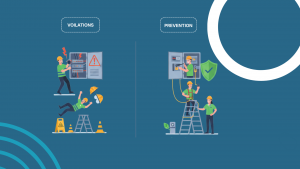If you’ve been a homeowner for a while, you’ve likely heard the term “refrigerant” in relation to your HVAC system. It’s the essential substance that allows your air conditioner to cool your home. But the world of refrigerants is changing, and these changes could have a significant impact on your wallet and comfort. The two refrigerants at the center of this change are R-22 and R-410A.
The End of an Era: The R-22 Refrigerant Phase-Out
For decades, R-22 (often known by the brand name Freon™) was the standard for residential air conditioning systems. It was a reliable refrigerant, but its environmental impact was a major concern. R-22 is a hydrochlorofluorocarbon (HCFC), and when it leaks, it directly harms the Earth’s ozone layer. This led to a global effort to phase it out.
So, when was R-22 phased out? The U.S. Environmental Protection Agency (EPA), as part of the international Montreal Protocol, began phasing out the production of R-22 in a series of steps. The final and most significant step came on January 1, 2020, when the production and import of R-22 were completely banned in the United States. While you can still use a system that has R-22, the only way to get more refrigerant for a leak is to use reclaimed or recycled supplies. This has made R-22 incredibly expensive and hard to find.
The Successor’s Turn: Is R-410A Being Phased Out?
After R-22’s phase-out, R-410A (often known as Puron™) became the new industry standard. Unlike R-22, R-410A does not deplete the ozone layer. However, it has its own problem: a high Global Warming Potential (GWP). This means it’s a powerful greenhouse gas if it leaks into the atmosphere, contributing to climate change.
Because of this, the EPA is now phasing out R-410A as well. The American Innovation and Manufacturing (AIM) Act of 2020 directed the EPA to phase down HFCs, including R-410A, by 85% over a 15-year period. The most immediate and important date for homeowners to know is January 1, 2025. Starting this date, HVAC manufacturers are no longer allowed to produce new equipment that uses R-410A.
The New Refrigerant Landscape: What Comes Next?
The next generation of refrigerants, known as A2Ls, will be taking over. The most common replacements for R-410A are R-454B and R-32. These refrigerants have a much lower GWP, making them significantly better for the environment. While classified as “mildly flammable,” they are very difficult to ignite and are considered safe for residential use.
It’s crucial to understand that these new A2L refrigerants cannot be used in older systems designed for R-410A or R-22. This is because they operate at different pressures and require specific system components.
When to Replace HVAC System: The Smart Choice
The refrigerant changes present a critical question for homeowners: when to replace HVAC system? The decision depends on a few factors.
- You Have an R-22 System: If your HVAC system was installed before 2010, it almost certainly uses R-22. As the supply of this refrigerant dwindles, the cost to repair a leak will continue to rise dramatically. If your system is old and needs a major repair that involves a refrigerant recharge, it is almost always more cost-effective to replace the entire unit rather than paying for an expensive and short-term fix.
- Your R-410A System is Old or Inefficient: You don’t need to rush to replace an R-410A system that is still working well. However, if your system is nearing the end of its lifespan (15-20 years), or if you’re frequently paying for repairs, upgrading now is a smart long-term strategy. Starting in refrigerant change 2025, new equipment will use the new A2L refrigerants. While R-410A will still be available for servicing existing systems for many years, the supply will decrease over time, and prices will likely increase.
Benefits of Upgrading Now
- Improved Efficiency: Newer HVAC systems are far more energy-efficient than older models. Upgrading can lead to significant savings on your monthly energy bills. The new systems meet higher efficiency standards, which means you get better cooling for less money.
- Environmental Responsibility: By moving to an A2L refrigerant system, you are helping to reduce your carbon footprint and contribute to a more sustainable future. This is a crucial step in combating global warming and HVAC associations strongly support this transition to ensure a greener tomorrow.
- Long-Term Savings: While the initial cost of a new system may be higher, the lower energy bills, reduced repair costs, and peace of mind knowing you won’t be paying for expensive, obsolete refrigerant in the future make it a wise financial decision.
- Future-Proofing: A new system with an A2L refrigerant is compliant with the latest regulations, ensuring you are prepared for future changes in the industry.
Conclusion
In conclusion, the phase out of R-410A is the next step in a global effort to make our HVAC systems more environmentally friendly. If you have an older system that uses R-22, the time to replace it is now. If you have an R-410A system, it’s a good time to start planning for a future upgrade. Making the transition to a new, modern system not only benefits the planet but also offers better efficiency and long-term savings for your home


